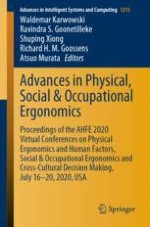2020 | OriginalPaper | Buchkapitel
Is Sick Building Syndrome Existing in Thailand?
verfasst von : Manutchanok Jongprasithporn, Nantakrit Yodpijit, Tipawan Reangchadchai, Latthidech Srimuen
Erschienen in: Advances in Physical, Social & Occupational Ergonomics
Aktivieren Sie unsere intelligente Suche, um passende Fachinhalte oder Patente zu finden.
Wählen Sie Textabschnitte aus um mit Künstlicher Intelligenz passenden Patente zu finden. powered by
Markieren Sie Textabschnitte, um KI-gestützt weitere passende Inhalte zu finden. powered by
